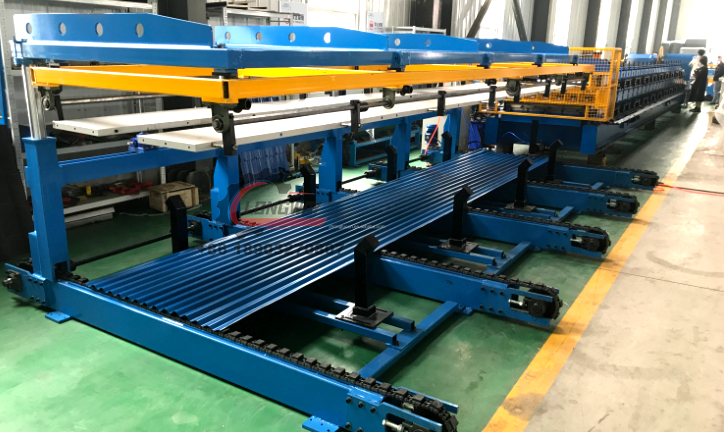Stainless Steel Sheet Cutting Machine for Custom Lengths and Precision Applications
Stainless Steel Cut to Length Machine Revolutionizing Precision Manufacturing
In the contemporary manufacturing landscape, efficiency, accuracy, and versatility are paramount. Among the various innovations that cater to these requirements, the stainless steel cut to length machine stands out. This equipment is engineered to streamline and enhance the processing of stainless steel, addressing the needs of industries that rely on high-quality steel components.
Understanding the Cut to Length Process
Cut to length (CTL) is a process that involves cutting large steel coils into accurately sized sheets or strips. The stainless steel cut to length machine automates this process, ensuring that every piece is cut to specified dimensions with minimal waste. Typically, the machine can handle a range of stainless steel grades and thicknesses, making it a versatile tool for different applications.
The operation of a cut to length machine consists of several stages. Initially, the stainless steel coil is unrolled and fed into the machine. Here, advanced sensors and electronic controls are employed to determine the precise length required. Once the necessary measurements are established, the machine’s cutting blades execute the cuts swiftly and accurately, producing clean edges that often require little to no finishing.
Benefits of Stainless Steel Cut to Length Machines
1. Precision Cutting One of the primary advantages of using a stainless steel cut to length machine is precision. These machines are designed to deliver consistent and accurate cuts, essential for industries where measurements are critical. The reduction in human error not only enhances the quality of the final product but also improves overall operational efficiency.
2. Reduced Material Waste Traditional cutting methods often result in a significant amount of scrap metal. However, with the precision offered by cut to length machines, manufacturers can optimize their material usage, leading to reduced waste and lower material costs. This aspect is particularly beneficial in eco-conscious manufacturing environments.
stainless steel cut to length machine

3. Increased Productivity Automation plays a crucial role in modern manufacturing. Stainless steel cut to length machines significantly accelerate the production process compared to manual cutting methods. With the ability to process large volumes of material swiftly, manufacturers can meet tight deadlines and respond to market demands more effectively.
4. Versatility These machines are built to handle various stainless steel grades and thicknesses, making them suitable for a wide array of industries, including automotive, aerospace, construction, and food processing. This versatility ensures that manufacturers can utilize a single machine for diverse applications, enhancing their operational flexibility.
5. Enhanced Safety Automation reduces the likelihood of workplace injuries that are often associated with manual cutting processes. Stainless steel cut to length machines are equipped with safety features that protect operators, creating a safer working environment.
Applications Across Industries
The applications of stainless steel cut to length machines are vast. In the automotive industry, for instance, they are used to produce parts such as chassis components, exhaust systems, and decorative trims. In construction, cut to length stainless steel sheets are essential for structural elements and architectural features. Food processing facilities also utilize these machines for creating high-quality stainless steel equipment, ensuring hygiene and durability.
Conclusion
The stainless steel cut to length machine is an invaluable asset in today’s manufacturing sector. Its ability to provide precise cuts, reduce waste, increase productivity, and enhance safety makes it an essential tool for various industries. As manufacturing continues to evolve, the adoption of such advanced machinery will likely increase, driving efficiency and quality to new heights. Embracing technology like the stainless steel cut to length machine is not just a trend; it is a crucial step towards a more efficient and sustainable manufacturing future.
-
Roof Panel Machines: Buying Guide, Types, and PricingNewsJul.04, 2025
-
Purlin Machines: Types, Features, and Pricing GuideNewsJul.04, 2025
-
Metal Embossing Machines: Types, Applications, and Buying GuideNewsJul.04, 2025
-
Gutter Machines: Features, Types, and Cost BreakdownNewsJul.04, 2025
-
Cut to Length Line: Overview, Equipment, and Buying GuideNewsJul.04, 2025
-
Auto Stacker: Features, Applications, and Cost BreakdownNewsJul.04, 2025
-
Top Drywall Profile Machine Models for SaleNewsJun.05, 2025








